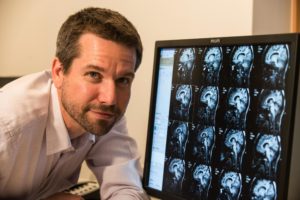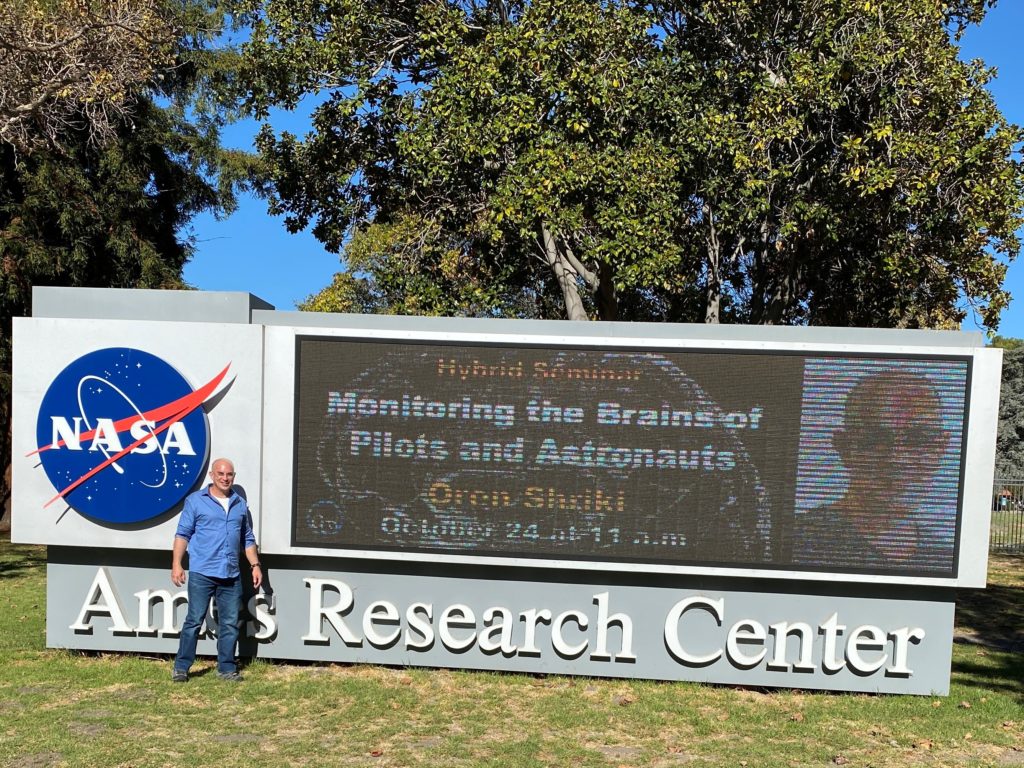
Brains of People with Autism Look Same in MRI
Brains of People with Autism Look Same in MRI
November 4, 2014
Medical Research, Press Releases
BEER-SHEVA, Israel, November 4, 2014 — In the largest MRI study to date, researchers from Ben-Gurion University of the Negev (BGU) and Carnegie Mellon University have shown that the brain anatomy in MRI scans of people with autism above age six is mostly indistinguishable from that of typically developing individuals and, therefore, of little clinical or scientific value.
The study, “Anatomical Abnormalities in Autism?” was just published in the prestigious Oxford journal Cerebral Cortex.
“Our findings offer definitive answers regarding several scientific controversies about brain anatomy, which have occupied autism research for the past 10 to 15 years,” says Dr. Ilan Dinstein of BGU’s Departments of Psychology and Brain and Cognitive Sciences. “Previous hypotheses suggesting that autism is associated with larger intra-cranial gray matter, white matter and amygdala volumes, or smaller cerebellar, corpus callosum and hippocampus volumes were mostly refuted by this new study.”
The researchers used data from the Autism Brain Imaging Data Exchange (ABIDE), which provides an unprecedented opportunity to conduct large-scale comparisons of anatomical MRI scans across autism and control groups and resolve many outstanding questions. This recently- released database is a worldwide collection of MRI scans from over 1,000 individuals (half with autism and half controls) ages six to 35 years old.
“In the study we performed very detailed anatomical examinations of the scans, which included dividing each brain into over 180 regions of interest and assessing multiple anatomical measures such as the volume, surface area and thickness of each region,” Dinstein explains.
The researchers then examined how the autism and control groups differed with respect to each region and also with respect to groups of regions using more complex analyses.
“The most striking finding here was that anatomical differences within both the control group and the autistic group was immense and greatly overshadowed minute differences between the two groups,” Dinstein explains. “For example, individuals in the control group differ by 80 to 90 percent in their brain volumes, while differences in brain volume across autism and control groups differed by two to three percent at most. This led us to the conclusion that anatomical measures of brain volume or surface areas do not offer much information regarding the underlying mechanism or pathology of Autistic Spectrum Disorder (ASD),” he states.
“These sobering results suggest that autism is not a disorder that is associated with specific anatomical pathology and as a result, anatomical measures alone are likely to be of low scientific and clinical significance for identifying children, adolescents and adults with ASD, or for elucidating their neuropathology.
Dinstein believes that more complex explanations involving combinations of measures in more homogeneous sub-groups are likely to be the answer. “Expecting to find a single answer for the entire ASD population is naïve. We need to move on to thinking about how to split up this very heterogeneous group of disorders into more meaningful biologically-relevant subgroups,” he says.
This conclusion stands in sharp contrast to numerous reports of significant anatomical differences described by smaller studies, which have typically included comparisons of 40 to 50 individuals. “The problem with small samples, large within-group heterogeneity, and a scientific bias to report only positive findings, is that small samples are likely to yield significant differences across autism and control groups in a few of the 180 brain regions,” Dinstein explains.
“In such a situation one would expect that each study would find significant differences in different brain areas and that findings will be very inconsistent across studies,” he says. “This is exactly what you see when you examine the autism anatomy literature from the last decade or so. Our study simply explains why this has been happening and puts an end to several ensuing debates.”
Other researchers who participated in this study include Dr. Sigal Berman of BGU’s Department of Industrial Engineering and Management, Prof. Marlene Behrmann of Carnegie Mellon University’s Department of Psychology, and Shlomi Haar, a doctoral student in BGU’s Department of Brain and Cognitive Sciences.
This work was supported by Simons Foundation SFARI grant 177638 (M.B. and I.D.).
ABOUT AMERICANS FOR BEN-GURION UNIVERSITY
By supporting a world-class academic institution that not only nurtures the Negev, but also shares its expertise locally and globally, Americans for Ben-Gurion University engages a community of Americans who are committed to improving the world. David Ben-Gurion envisioned that Israel’s future would be forged in the Negev. The cutting-edge research carried out at Ben-Gurion University drives that vision by sustaining a desert Silicon Valley, with the “Stanford of the Negev” at its center. The Americans for Ben-Gurion University movement supports a 21st century unifying vision for Israel by rallying around BGU’s remarkable work and role as an apolitical beacon of light in the Negev desert.
About Ben-Gurion University of the Negev
Ben-Gurion University of the Negev embraces the endless potential we have as individuals and as a commonality to adapt and to thrive in changing environments. Inspired by our location in the desert, we aim to discover, to create, and to develop solutions to dynamic challenges, to pose questions that have yet to be asked, and to push beyond the boundaries of the commonly accepted and possible.
We are proud to be a central force for inclusion, diversity and innovation in Israel, and we strive to extend the Negev’s potential and our entrepreneurial spirit throughout the world. For example, the multi-disciplinary School for Sustainability and Climate Change at BGU leverages over 50 years of expertise on living and thriving in the desert into scalable solutions for people everywhere.
BGU at a glance:
20,000 students | 800 senior faculty | 3 campuses | 6 faculties: humanities & social sciences, health sciences, engineering sciences, natural sciences, business & management, and desert research.
For all press inquiries, please contact:
James Fattal, J Cubed Communications
516.289.1496




